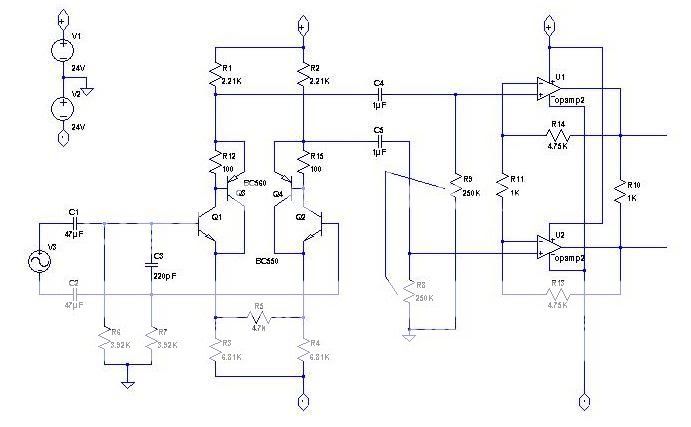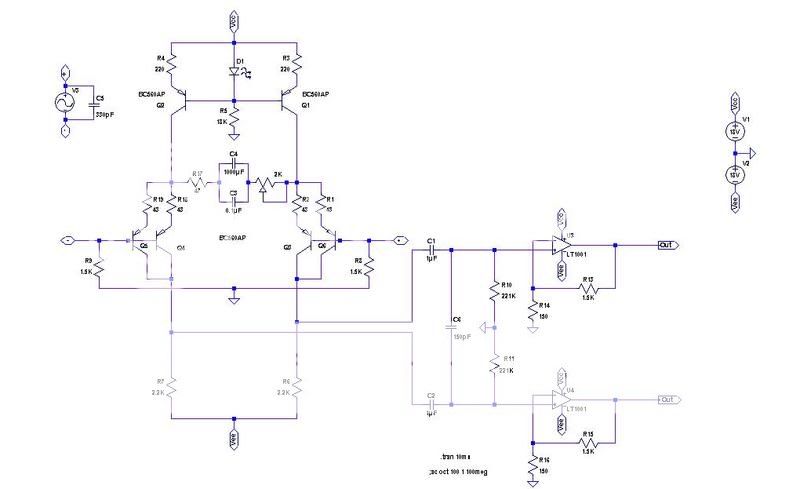You are using an out of date browser. It may not display this or other websites correctly.
You should upgrade or use an alternative browser.
You should upgrade or use an alternative browser.
This Works
- Thread starter analag
- Start date
Help Support GroupDIY Audio Forum:
This site may earn a commission from merchant affiliate
links, including eBay, Amazon, and others.
Sleeper
Well-known member
Hi Analag,
I don't know how this floated up to the surfac e, but it does look intriguing. I'd love to see the schematic too, as I need a superclean pre and Ithough I've looked plenty, I've never built one of your designs.
Hope you or somebody out there can find it.
Best
Kelly
I don't know how this floated up to the surfac e, but it does look intriguing. I'd love to see the schematic too, as I need a superclean pre and Ithough I've looked plenty, I've never built one of your designs.
Hope you or somebody out there can find it.
Best
Kelly
bernbrue
Well-known member
Hi,
would like to see the schematic as well.
regards
Bernd
would like to see the schematic as well.
regards
Bernd
flaheu
Well-known member
cool :grin:
Sleeper
Well-known member
Yes- second on the coolness. no hurry. I think I didn't explicitly say thanks on that last post so I'll throw this out there too. Thanks.
Sleeper
Sleeper

I think I will have to do this one from memory, with some changes as well.
R5 is a pot, preferably reverse tapered. It is a trim control. R8/R9 would be a rotory switch or dual pot which is used for gain. Opamp would be an OPA2604 for low noise, FET input and high voltage (+/-24V) rail.
Feel free to disect.

analag
jdbakker
Well-known member
Interesting, thanks.
The front-end is a composite diff pair as used in Rod Elliot's Project 66:

In your schematic, current sources instead of R3/R4 (or single CS to a center-tapped R5) would increase CMRR at the expense of higher noise.
Setting gain through R8/R9 has the side effect of changing the LP rolloff. Why not vary R11 to change gain?
JDB.
[but how does it sound? Impossible to tell from the schematic, but it's indeed simple enough to build]
The front-end is a composite diff pair as used in Rod Elliot's Project 66:

In your schematic, current sources instead of R3/R4 (or single CS to a center-tapped R5) would increase CMRR at the expense of higher noise.
Setting gain through R8/R9 has the side effect of changing the LP rolloff. Why not vary R11 to change gain?
JDB.
[but how does it sound? Impossible to tell from the schematic, but it's indeed simple enough to build]
rafafredd
Well-known member
I do have the original and it´s different. Can I post it maybe?
rafafredd
Well-known member
so, here it goes:

kind of hard to read, because of photobucket´s limitations...
The other one you´ve posted in this page, looks closer to what you called "valley style"...

kind of hard to read, because of photobucket´s limitations...
The other one you´ve posted in this page, looks closer to what you called "valley style"...
[quote author="rafafredd"]so, here it goes:

kind of hard to read, because of photobucket´s limitations...
The other one you´ve posted in this page, looks closer to what you called "valley style"...[/quote]
I haven't been following this thread but from a quick glance you could reduce common gain some more by connecting the ground side of the resistors at the minus inputs on both opamps to each other instead of to ground. The CM should be small due to using current sources on input devices, but less for no cost increase is usually OK, actually could use one less resistor.
JR

kind of hard to read, because of photobucket´s limitations...
The other one you´ve posted in this page, looks closer to what you called "valley style"...[/quote]
I haven't been following this thread but from a quick glance you could reduce common gain some more by connecting the ground side of the resistors at the minus inputs on both opamps to each other instead of to ground. The CM should be small due to using current sources on input devices, but less for no cost increase is usually OK, actually could use one less resistor.
JR


